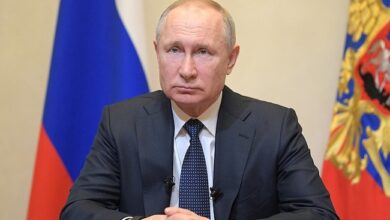
By Jerry M. Rosenberg
In the 21st century, the global economy is in flux as United States’ influence is arguably declining. China, in its constant pursuit to replace the U.S. as the global hegemon now has a legitimate use of the term Marshall Plan.
In April 2018, the German newspaper Handelsblatt reported that twenty-seven EU ambassadors out of twenty-eight signed a document denouncing the lack of reciprocity in infrastructure projects linked to the far-reaching Chinese development strategy Belt and Road Initiative (BRI), launched in 2013. The report criticized the BRI as a means for Chinese attempts to shape globalization. The strategy runs counter to the EU agenda for liberalizing trade and to push “the balance of power in favor of subsidized Chinese firms.” Hungary was the only nation to decline signing. Why? In 2014, China created a Foreign Domestic Investment in Hungary that rose by 471 percent, an amount equaling almost 33 percent of total Chinese investments in central and eastern European countries. The result is a diplomatic bombshell across Europe indicating an apparent obligation of Hungary not to criticize China.
At the same time, China wants to intensify relations with Europe and become the center of the world leaving the U.S. marginalized. In its striving for a first rank position in globalization it has signed free trade agreements around the world. In 2013, President Xi Jinping created its Five Principles of Peaceful Coexistence in the Belt and Road Initiative(BRI), a “binding strategy” to increase its outreach and influence, including with nations of the European Union. Some global experts believe that this is an extension of China’s arm to promote “alternative models of governance.” Others claim that the government targets the U.S. as a potential competitor and offers a new world order. It is still to early to conclude that BRI is a significant threat to either the EU or United States. However, all institutions must remain alert before it is too late to respond.
While the government presents the BRI as an inherently economic project it has important geopolitical implications that contribute to balancing the U.S. presence in the region. BRI is inextricably linked to the country’s long-term vision of its role in world politics in the middle of the 21st century.
Testifying before the U.S. Senate in October 2017, Defense Secretary James Mattis harbored serious concerns about BRI, “In a globalized world, there are many belts and many roads and no one nation should put itself into a position of dictating ‘one belt, one road.’” And, again in June 2018, Mattis warned that China was “harboring long-term designs to rewrite the existing global order.”
China has issued over $200 billion in loans, with a total investment of up to $1.3 trillion (dwarfing the original U.S. Marshall Plan) by 2027, designed to “reflect Chinese interests,” assuredly to replace the U.S. at the center of the global community. The Financial Times said “Like the Marshall Plan, the new Silk Road initiative is designed to use economic threats as a way to address other vulnerabilities.” McKinsey’s Kevin Sneader wrote “Some people have talked about the BRI being the second Marshall Plan (the Marshall Plan was merely one-twelfth the size of BRI.)” And Bloomberg was quick to label BRI as “China’s Marshall Plan.”
There are five core similarities between the 1947 Marshall Plan and BRI according to Simon Shen and Wilson Chen. They are boosting exports, exporting currency, countering a rival, fostering strategic divisions, and siphoning away diplomatic support.
The original 1947 Marshall Plan allowed European nations to purchase American goods and technologies, becoming an important role in slowly replacing British influence on commodities and industrial technologies.
In 2013, China began to replace American dominance as it positioned itself against a vulnerable and slipping decline of U.S. global interests, thus a burst of compounding threats.
Initially, China’s introduction into Europe with BRI was with the Visegard Four countries from Central Europe, the former Soviet satellite nations, now part of the European Union. The EU had already launched a project to create a transport corridor linking Europe with China.
Effective October 2020, there are 34 BRIs in Europe and Central Asia; 18 of which are in the EU. In total, globally 125 nations and 29 international organizations have signed up as partners in BRI, with more to come.
Italy became a partner with BRI in 2019, becoming Italy’s emerging economic strategy. Italy’s own development needs and national interest had prompted it to edge closer to China, despite U.S. opposition. The government is intent on improving the infrastructure at their ports along the Mediterranean with interconnectivity between the land and sea. Italy may be drifting away from their historic alliance across the Atlantic.
Noah Barkin wrote: “European countries must prepare for a world in which they will be viewed by Washington through a China prism – much in the same way that Europe was seen through a Soviet lens during the Cold War.”
Will the United States surrender its long-standing and earned reputation of global outreach? Now, seventy-five years after the power and initiative of the original post-World War II Marshall Plan’s genius may be at risk.
Jerry M. Rosenberg is Emeritus Professor of International Business at Rutgers University, New Jersey and has just completed “Dark Winters: A New U.S.-European Marshall Plan.”




